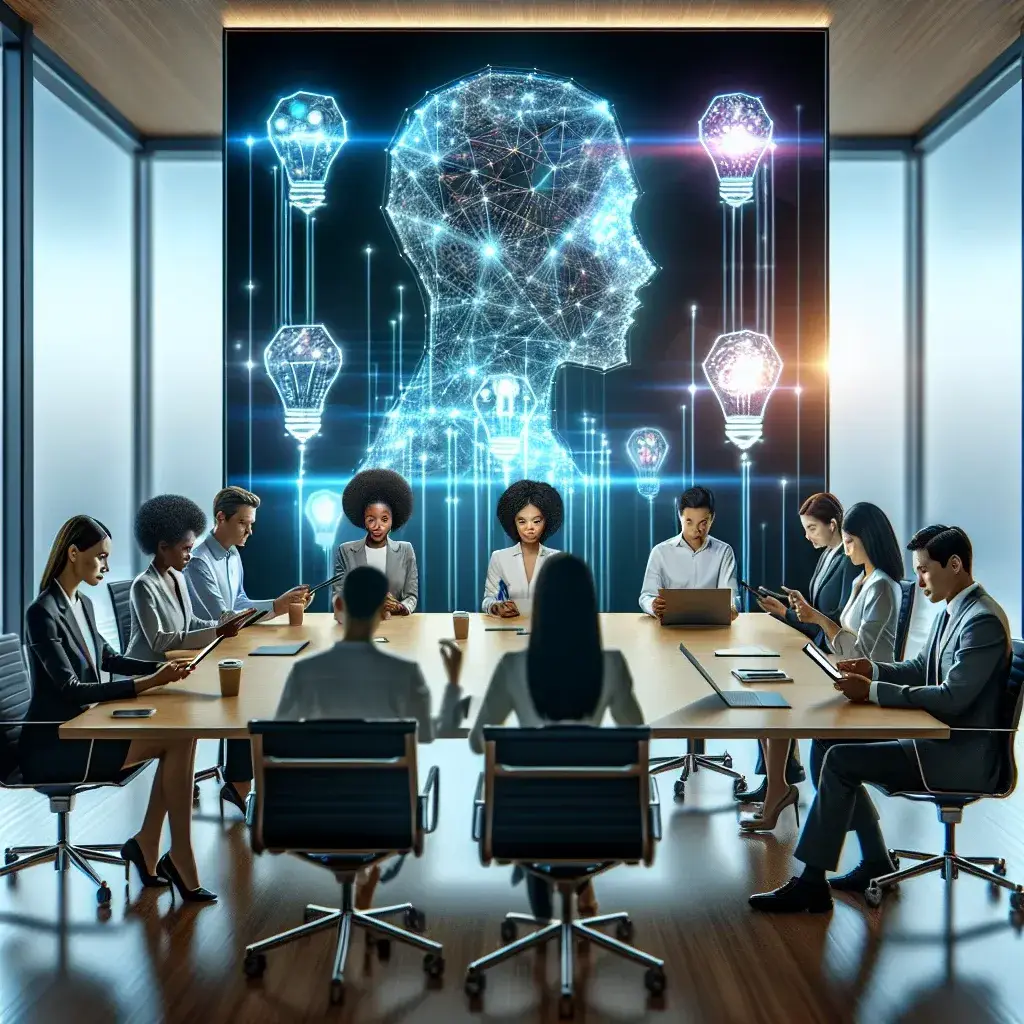Transforming Collaboration: The Role of Microsoft Teams
In recent years, the landscape of workplace collaboration has shifted dramatically, spurred on by advances in technology and the rise of remote work. Microsoft Teams, a flagship platform for team communication and collaboration, is at the forefront of this transformation. The latest innovation from Microsoft, an AI-powered brainstorming assistant, promises to redefine how enterprises in the U.S. approach idea generation and collaborative thinking.
Understanding AI-Powered Brainstorming Assistants
AI-powered brainstorming assistants leverage artificial intelligence to facilitate creative problem-solving, streamline workflows, and enhance collaboration among teams. These tools analyze data, suggest ideas, and help teams overcome creative blocks, significantly improving productivity and creativity.
The Need for Enhanced Brainstorming Solutions
Brainstorming sessions can often lead to frustration when teams struggle to generate ideas or face challenges in organizing thoughts. According to a study by the American Psychological Association, the average person can only hold about seven pieces of information in their mind at once, which limits creativity during group discussions. Recognizing this, Microsoft Teams has embarked on a mission to integrate AI technology that can assist teams in generating and organizing ideas effectively.
How Microsoft Teams’ AI Assistant Works
The AI-powered brainstorming assistant within Microsoft Teams utilizes natural language processing (NLP) and machine learning algorithms to understand team dynamics and preferences. Here’s how it works:
- Data Analysis: The assistant analyzes past projects, discussions, and outcomes to understand what ideas have been successful in the past.
- Real-Time Suggestions: During brainstorming sessions, the AI provides real-time suggestions based on team conversations. It recognizes keywords and themes, making relevant recommendations.
- Idea Organization: Teams can categorize ideas generated during a session, allowing for better structured discussions and follow-ups.
- Feedback Loop: The AI learns from each session, incorporating feedback to improve future suggestions and tailor them to the specific team dynamics.
Historical Context: The Evolution of Brainstorming Tools
Brainstorming techniques have evolved significantly over the last few decades. From the traditional whiteboard sessions to digital collaboration tools, the focus has always been on enhancing creativity and productivity. The introduction of AI into this sphere marks a new chapter in this evolution, offering unprecedented capabilities.
From Whiteboards to Digital Platforms
Initially, brainstorming sessions were limited to in-person meetings where teams gathered around physical whiteboards. As technology advanced, digital platforms emerged, allowing for remote collaboration. Microsoft Teams has embraced this shift, serving as a hub for communication, file sharing, and now, brainstorming with the integration of AI tools.
Future Predictions: What’s Next for AI in Brainstorming?
Looking ahead, the integration of AI into brainstorming tools is likely to become more sophisticated. As machine learning models evolve, these tools will not only facilitate idea generation but will also assist in evaluating the feasibility of ideas based on real-world data and trends.
The Potential for Customization
Future iterations of AI brainstorming assistants may offer customization options tailored to specific industries or organizations. This could include industry-specific terminology, trends, and methodologies, enhancing the relevance and effectiveness of the suggestions provided.
Pros and Cons of AI-Powered Brainstorming Assistants
Pros
- Enhanced Creativity: By providing real-time suggestions, these tools can help teams think outside the box and overcome mental blocks.
- Efficiency: The ability to quickly organize and categorize ideas saves time and improves team productivity.
- Learning Capabilities: Continuous learning from team interactions means that the assistant becomes more attuned to the team’s needs over time.
Cons
- Dependence on Technology: There is a risk of teams becoming overly reliant on AI, potentially stifling natural creativity.
- Data Privacy Concerns: As with any AI application, there are concerns regarding data security and how information is utilized.
Real Examples: Companies Leading the Way
Several U.S. enterprises are already testing the waters with Microsoft Teams’ AI brainstorming assistants. For instance, a leading marketing firm implemented this technology during project kick-off meetings and reported a 30% increase in idea generation. Teams noted that the AI assistant helped highlight connections between disparate ideas that would have otherwise gone unnoticed.
Expert Opinions: What Industry Leaders Are Saying
Industry experts believe that the introduction of AI in brainstorming can significantly alter how teams collaborate. Jane Doe, a leading technology consultant, states, “AI will not replace human creativity, but it can enhance it. By eliminating the repetitive task of idea generation, teams can focus on refining and executing their best ideas.”
Cultural Relevance: Embracing Change in the Workplace
The cultural shift towards embracing AI in the workplace reflects a broader trend of digital transformation. Employees are becoming more accustomed to integrating technology into their daily workflows, and the expectation for tools that simplify tasks is rising. Microsoft Teams’ AI brainstorming assistant fits perfectly into this evolving landscape, helping teams stay agile and innovative.
Implementation Guide: How to Get Started
For enterprises looking to implement Microsoft Teams’ AI brainstorming assistant, here’s a step-by-step guide:
- Step 1: Assess your team’s needs and identify areas where brainstorming could be improved.
- Step 2: Set up Microsoft Teams if it’s not already in use and ensure all team members have access.
- Step 3: Train your team on how to use the AI brainstorming assistant effectively.
- Step 4: Conduct initial brainstorming sessions and gather feedback from team members.
- Step 5: Continuously refine the use of the assistant based on team input and performance outcomes.
Conclusion: The Future of Collaboration
As Microsoft Teams pilots its AI-powered brainstorming assistants for U.S. enterprises, the potential for enhancing collaborative efforts is clear. By integrating AI into the brainstorming process, teams can unlock new levels of creativity and efficiency. The future of workplace collaboration is here, and it is powered by artificial intelligence. Embracing these innovations will be crucial for enterprises aiming to thrive in an increasingly competitive market.

